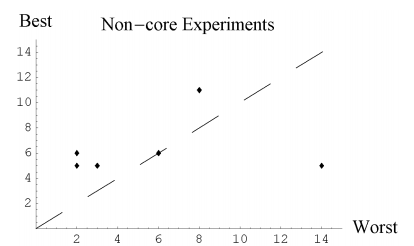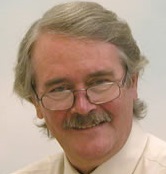Laboratory Experiments, On Good and Bad Ones
( \newcommand{\kernel}{\mathrm{null}\,}\)
INTRODUCTION
The introductory Physics laboratory at the University of Toronto has students from our two service courses. The laboratory has an enrollment of about 900 students, and runs for the entire academic year; the students attend the laboratory every two weeks. For most of these students this will be their only university Physics course, and many of them intend to apply to a professional faculty such as Medicine.
The laboratory has 43 different experiments, divided into 2 groups of 15 core experiments and 28 non-core ones. The former experiments tend to be somewhat simpler than the latter, and are the only ones available in the first half of the academic year. In the second half of the year all 43 experiments are available and the students are free to choose ones that match their interests. Such a laboratory is often called a “cafeteria style.”
In our laboratory the experiments, especially the non-core ones, tend to be open ended. Thus the students can do a fewer number of experiments in greater depth, or a larger number in less depth. Typically, students do 7 experiments during the academic year.
The experiments also have a wide range of difficulty levels, from the nearly trivial to the very demanding.
The Guide Sheets that we provide the students on how to do a particular experiment are sometimes fairly complete and detailed, while others are only a paragraph or so in length.
Here we discuss a recent evaluation of the laboratory in which the students were asked to name the best and worst experiments in the laboratory.
METHOD AND RESULTS
Every student who attended the laboratory was handed an evaluation form, and 466 returned them; this is a bit above one-half of the students in the laboratory and is a typical return rate. Among the questions on the form were:
• What is the best experiment you have done this year?
• What is the worst experiment you have done this year?
Virtually every experiment in the laboratory was chosen as the best by at least a few students; at least a few other students chose almost every experiment in the laboratory as the worst.
Figure 1 shows the core experiments that at least 10 students had chosen as the best and/or at least 10 other students had named as the worst experiment. The dashed line has slope 1 and intercept (0,0), and with two exceptions most experiments are fairly close to it. One of the exceptions had 96 “best” votes and 29 “worst” votes; this was an experiment on free fall. The other (2 “best”, 35 “worst”) is an experiment that clearly needs some attention; it is on standing acoustic waves and we believe we have identified some of the problems with it.

Figure 2 shows the non-core experiment’s ratings. Only experiments with 5 “best” and/or 5 “worst” votes are displayed.

DISCUSSION
We all know that people in general and students in particular display a wide range of interests, abilities, and learning styles. However many of our course and laboratory offerings do not reflect that fact. Here we have presented direct evidence of these differences between students: for virtually every one of our 43 experiments, some students thought it was the best they had done while others thought it was the worst they had done.
We believe that if a student is interested in the topic of a particular experiment then they are almost certain to learn much more experimental Physics than by doing an experiment in which they are not interested. Other factors that may influence whether a student likes a particular experiment or not can include whether their learning style matches the type of Guide Sheet provided for the experiment, or whether the experiment is difficult or easy.
In any case, results such as discussed here strengthen our commitment to a cafeteria style laboratory.
A question remains, however, that we do not know how to answer. How can we assist our students in choosing experiments that match their interests, abilities, and learning styles?


